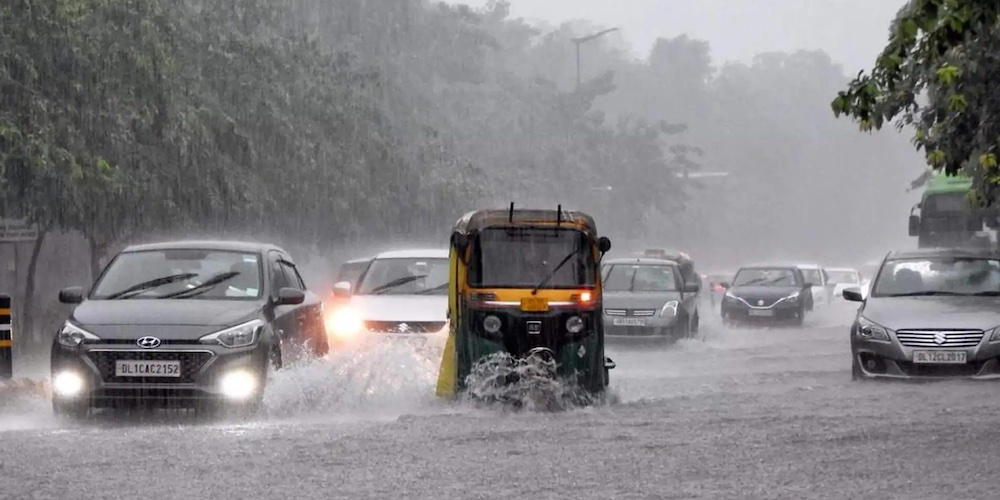Weather Challenges During Pre-Monsoon Phase

Month of April used to be fairly pleasant till ten years ago. Gradually, the maximum temperature began shooting unbelievably for the last few years. During 2025 so far, this ‘transition’ month did show a few hot days but by and large, it was tolerable and manageable.
The month of May too has been reasonably pleasant. Three days, 17th, 23rd and 25th, however, saw somewhat intense winds and heavy downpour, something unusual for this time of the year.
LA NINA ?
However, no impact of La Nina is expected on the pattern of rainfall according to Weather Scientists. La Nina, meaning little girl in Spanish, is characterized by cooler than normal sea surface temperature over central and eastern Pacific ocean. When its effect occurs in India, normal to above normal rainfall takes place.
However, on May 17, four persons lost their lives and a few were injured when a sudden dust storm followed by heavy rain took place in the afternoon.
Freak weather also led to some infrastructural damages in the national capital region(NCR).A portion of tin roof of New Ashok Nagar Metro station could not bear the intense windstorm. Palam Observatory recorded the wind speed at 74 kmph, while according to Safdarjung Observatory, it was 46 kmph.
Air Quality Index (AQI), however, came down to moderate category with a reading of 157. Air services, surprisingly, were normal. No flights were cancelled but about 300 flights had to be delayed.
On May 23, first it was the arrival of a strong dust storm around 8 p.m., leading to uprooting of a large number of trees in the NCR, apart from breaking /falling of tree branches, all over. Seven persons lost their lives.While maximum temperature on 17th May was 41 degree, it was 42.6 degrees on 23rd May.
On May 25, once again for the third time, the mood of the weather changed on May 25. As the previous day was very hot (38.2 and 28.5 degrees with a normal AQI of 120), cool wind at 2.00 a.m. suddenly changed the weather pattern. Wind of relatively less intensity hit NCR.Within five minutes, it began raining which became torrential. Rain, having subsided, continued till 6 a.m. Instances of lightning were also seen.
Rain at early hours did give relief to people from stifling heat. Wind speed recorded at Safdarjung Observatory was 82 kmph. Sharp drop in temperature was recorded between 1.15 and 2.30 a.m. Minimum temperature of 31 degree came down to 21 degree according to Safdarjung Observatory while according to Palam Observatory, 29 degree came down to 22 degree.
Many important locations in New Delhi were inundated. Scores of vehicles parked on roads were damaged and a number of trees fell down.Two persons were killed while eleven persons were injured. 25 flights were delayed while one hundred were affected. Many had to be diverted as well. Damage and devastation was on the lower side as compared to storm and rain on 17th and 23rd May.
MORE DAMAGE ON MAY 23
On 23rd May, when velocity of storm (as per India Meteorological Department, 80 kmph) subsided, power lines were cut off as an usual precautionary measure. Such a step, however, inconvenienced Government servants returning home.Traffic became erratic and cyclists and pedestrians were put to considerable difficulty. Traffic personnel deserted their booths at many places. Dust would get accumulated on the face, clothes, specs, window panes. One had to brave all this when rain began. Same lasted for more than half an hour.

SQUALLS & HAILSTORMS
As if this wrath of nature was not enough, squalls and hail storms hit the streets for fifteen to twenty minutes. Not only did the roads have a lesser number of vehicles, Metro services too slowed down or were affected. Wall collapse cases too came to notice.
MOIST WINDS
According to IMD, such storm activity aligns with long term climatological patterns. It was more in May in terms of frequency and ferocity. Further, more moist wind days have contributed to a surge in storm activity. Moist winds carry moisture from Arabian Sea and Bay of Bengal into North West India.The heated land mass becomes conducive to formation of thunderstorms.
DEVASTATION & SYSTEM OF FORECAST
When freak weather knocks, one sees signs of devastation all over- uprooted trees & plants, fallen branches, crushed vehicles, water logging, garbage and slush on footpaths, damaged roofs, wall collapses, breakage of water supply and what not ?
If the system of forecasting is fool proof and the method of communication is timely, persons, livestock and properties can be saved to a considerable extent.
But experience shows that forecasts normally do not point toward the actual reality.
Electronic media and Social media, instead of ensuring healthy dissemination of information, many times, add to confusion.
IMD has come out with scientific forecasts of not one day but for a bunch of three to five days on many occasions in 2024 and 2025. But except once or twice, there was fluctuation in temperature or rainfall pattern. If such a situation prevails, one loses faith in the system of forecasts.
HILL REGIONS
Speaking of regions of Western and Eastern Himalayas, never before has it snowed so heavily as in April and May this year. We had extended snow season in J & K, H.P., Uttarakhand and Sikkim till last week. Many high altitude tourist locations were either cut off or were still experiencing snowfall.
Not only this, heavy downpour in April end and major part of first twenty four days of May has led to breakage of communication, jamming of drains, uprooting of trees, lamp posts and landslides in villages, including agricultural fields. A large number of stranded tourists had to be evacuated from all hilly states from time to time.
EARLY ARRIVAL OF SOUTH WEST MONSOON
The South West Monsoon surprisingly hit the coast of Kerala on 24th May. It was its earliest arrival since 2009 when it touched Kerala on 23rd May. Heavy rain lashed many towns and villages.Trees were uprooted, in some cases branches came down, electricity lines were snapped and traffic was impacted. Red alert was issued for 5 Districts for May 25 and 11 Districts for May 26. Further, visitors were prevented from visiting State hill stations. Monsoon was reported progressing towards Maharashtra.
CONCLUSION
One can not wage war against fury of nature. If the same happens in the form of freak weather, one is taken aback.Welcome relief, no doubt is ensured to people suffering from blistering heat but they also suffer due to uncleared drains and erratic flow of vehicles.Fool proof preparation for Monsoon has to be ensured. Infrastructure to handle Monsoon related emergencies in hills also shall have to be strengthened. Even if people are cautioned, they rush to the hills and get trapped in the process.

(The author is former Chief Secretary, Sikkim)


